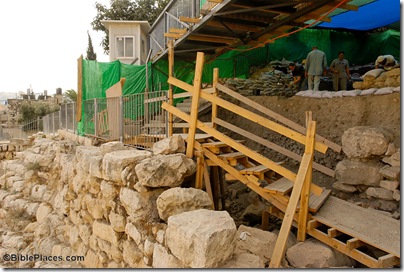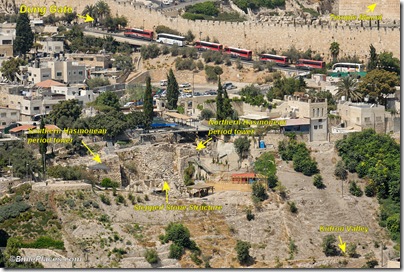Yesterday the Jerusalem Post finally reported on the discovery of “Nehemiah’s wall” first announced several weeks ago. Today the AP has a report. Most of the material is similar to what was reported before, but the Jerusalem Post says that not only the tower but the wall as a whole is from the time of Nehemiah. That would be a significant development, because the wall is large and easily visible to tourists. The AP version quotes two scholars with different views on Mazar’s conclusion. Stern’s expertise is Persian period.
Ephraim Stern, professor emeritus of archaeology at Hebrew University and chairman of the state of Israel archaeological council, corroborated Mazar’s claim. “The material she showed me is from the Persian period,” the period of Nehemiah, he said. “I can sign on the date of the material she found.”
Another scholar disputed the significance of the discovery.
Israel Finkelstein, professor of archaeology at Tel Aviv University, called the discovery “an interesting find,” but said the pottery and other remains do not indicate that the wall was built in the time of Nehemiah. Because the debris was not connected to a floor or other structural part of the wall, the wall could have been built later, Finkelstein said.
“The wall could have been built, theoretically, in the Ottoman period,” he said. “It’s not later than the pottery — that’s all we know.”
You can read the full story here.
On the picture above, the wall redated to Nehemiah’s time is in between the “Southern Hasmonean period tower” and “Northern Hasmonean period tower,” behind the “Stepped Stone Structure.”

